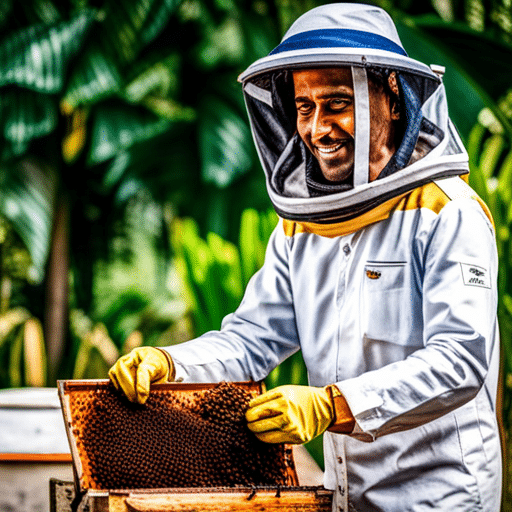Table of Contents
Introduction to Beekeeping in India
Beekeeping, also known as apiculture, is the practice of maintaining bee colonies in hives to collect honey and other by-products such as beeswax, royal jelly, and propolis. In India, beekeeping has been a significant part of agriculture and rural economy for centuries. In this article, we’ll explore the process of beekeeping in India, the equipment needed, and the differences between queen bees and drone bees.
Types of Bees in India
There are four primary species of honey bees in India: Apis cerana indica, Apis dorsata, Apis florea, and Apis mellifera. Apis cerana indica, the Indian hive bee, is the most popular among beekeepers due to its adaptability to local conditions and higher honey yield.
Beekeeping Equipment
To begin beekeeping, you’ll need equipment such as bee hives, frames, a smoker, a bee suit, gloves, a hive tool, and a bee brush. It’s essential to invest in quality equipment to ensure the safety of both the beekeeper and the bees.
The Process of Beekeeping
Setting Up an Apiary
Choosing the Right Location
A suitable location for an apiary should have access to nectar and pollen sources, water, and shade. It should also be protected from strong winds and direct sunlight.
Constructing Hives
Beehives can be made from a variety of materials such as wood, plastic, or clay. The most common type of hive used in India is the Langstroth hive, which consists of a bottom board, brood boxes, supers, frames, and a top cover.

Acquiring Bees
You can obtain bees for your apiary by purchasing a package, a nucleus colony, or by capturing a swarm. It’s crucial to ensure that the bees are healthy and disease-free.
Hive Management
Feeding and Nutrition
Feeding bees is necessary during times of scarcity or to stimulate brood rearing. Sugar syrup and pollen substitutes can be used to supplement their diet.
Pest and Disease Control
Pests and diseases can threaten the health of a bee colony. Regular hive inspections and proper management practices can help prevent and control infestations.
Swarming and Colony Division
Swarming is a natural process where a colony divides to create a new one. Beekeepers can control swarming by timely inspections, providing adequate space, and splitting colonies when necessary.
Honey Harvesting and Processing
Honey harvesting is usually done twice a year – during the spring and autumn seasons. Beekeepers should ensure that they leave enough honey for the colony to survive during periods of nectar scarcity.
Processing and Packaging
After harvesting, honey is extracted from the comb, filtered, and stored in airtight containers. Proper processing and packaging are crucial to maintain the quality and shelf life of the honey.
Differences Between Queen Bees and Drone Bees
Physical Differences
Queen bees are larger than worker bees and have a longer abdomen. Drone bees, on the other hand, are bigger and sturdier than worker bees with large eyes that meet at the top of their head.
Roles and Responsibilities
The primary role of the queen bee is to lay eggs and produce pheromones that maintain colony cohesion. The drone bee’s main function is to mate with the queen and fertilize her eggs.
Mating Behavior
Queen bees mate with multiple drones during a single mating flight. After mating, the drone dies, and the queen stores the sperm to fertilize her eggs throughout her life.
Conclusion
Beekeeping in India is an important agricultural practice that contributes to the livelihood of many rural communities. By understanding the full process and the roles of queen bees and drone bees, you can ensure a successful and productive beekeeping experience. Embrace the fascinating world of beekeeping and reap the sweet rewards of your efforts.
FAQs
1. Can I start beekeeping in my backyard?
Yes, you can start beekeeping in your backyard, provided you have enough space and follow local regulations. Ensure your neighbors are comfortable with your decision and take necessary precautions to avoid any issues.
2. How much time does beekeeping require?
Beekeeping can be time-consuming, especially during the active seasons. Expect to spend several hours per week inspecting, feeding, and managing your hives.
3. How much honey can I expect from one hive?
Honey yield depends on various factors such as the bee species, hive management, and nectar availability. On average, a well-managed hive can produce 20-30 kg of honey per year.
4. Can I keep different species of bees in one apiary?
It is not recommended to keep different species of bees in one apiary, as it can lead to aggressive behavior and competition for resources.
5. How long does a queen bee live?
A queen bee can live for 3-5 years, but her egg-laying capacity decreases with age. Beekeepers often replace the queen after 2-3 years to maintain a productive hive.






